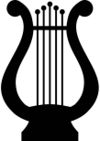Classical Indian dance
Indian classical dance, or Shastriya Nritya, is an umbrella term for different regionally-specific Indian classical dance traditions, rooted in predominantly Hindu musical theatre performance, the theory and practice of which can be traced to the Sanskrit text Natya Shastra. The number of Indian classical dance styles ranges from six to eight to twelve, or more, depending on the source and scholar; the main organization for Indian arts preservation, the Sangeet Natak Academy, recognizes eight: Bharatanatyam, Kathak, Kuchipudi, Odissi, Kathakali, Sattriya, Manipuri and Mohiniyattam. Additionally, the Indian Ministry of Culture includes Chhau in its list, recognizing nine total styles. Scholars such as Drid Williams add Chhau, Yakshagana and Bhagavata Mela to the list. Each dance tradition originates and comes from a different state and/or region of India; for example, Bharatanatyam is from Tamil Nadu in the south of India, Odissi is from the east coast state of Odisha, and Manipuri is from the northeastern state of Manipur. The music associated with these different dance performances consists of many compositions in Hindi, Malayalam, Meitei (Manipuri), Sanskrit, Tamil, Odia, Telugu, and many other Indian-Subcontinent languages; they represent a unity of core ideas and a diversity of styles, costumes and expression.
Summary
Indian classical dancing started around 200 BCE in India, as a joyful and celebratory activity, often in devotion to Hindu deities. Many of the performances are choreographed to retell stories of the gods and other historical accounts. All styles of Indian classical dance are vibrant, expressive and spiritual. Dance performances usually take place at festivals, universities, various cultural events, and more. The dancers who perform these styles are usually professionals who have devoted years of study and practice in their respective styles of Indian classical dance. In performances, the dancers move to the beat of the song or music that is playing; in some styles, such as Kathak, bells are worn around the ankles at times for added rhythmic effect when the feet are stomped. The dancer takes the role of the character that they are portraying in the performance, the composition being specific, and becomes emotionally connected with the story and the audience.
When dancers perform classical Indian dancing, they wear traditional clothes, including sarees, lenghas, and kurtas. Usually, women are the main performers in Indian classical dancing, though men are not absent from the tradition. The costume for women usually consists of a long, colorful, handmade gown (worn without shoes), with an intricately embroidered pattern(s) and beading on it. For accessories, there is the use of much ornate jewelry, such as necklaces, rings, earrings, nose-rings, bracelets, and anklets, sometimes with bells attached, which ring each time the dancer stomps their foot in rhythm. The costume also includes a headpiece or some form of scarf, depending on the style. The women usually wear considerable amounts of facial makeup, not only to be noticeable to the audience but to fully embody their character.
Types of classical dances
The Natya Shastra is the foundational treatise for classical dances of India, and this text is attributed to the ancient scholar Bharata Muni. Its first complete compilation is dated to between 200 BCE and 200 CE, but estimates vary between 500 BCE and 500 CE. The most studied version of the Natya Shastra text consists of about 6000 verses structured into 36 chapters. The text, states Natalia Lidova, describes the theory of Tāṇḍava dance (Shiva), the theory of rasa, of bhāva, expression, gestures, acting techniques, basic steps, standing postures – all of which are part of Indian classical dances. Dance and performance arts states this ancient text, are a form of expression of spiritual ideas, virtues, and the essence of scriptures.
Performance arts and culture
While the Natya Shastra is the revered ancient text in the Hindu tradition, there are numerous other ancient and medieval Sanskrit dance-drama related texts that further discuss and expand on the classical repertoire of performance arts, such as the Abhinaya Darpana, Abhinava Bharati, Natya Darpana, Bhava Prakasa and many others. The term "classical" (Sanskrit: "Shastriya") denotes the ancient Indian Shastra-based performing arts.
The text Natya Shastra describes religious arts as a form as margi, or a "spiritual traditional path" that liberates the soul, while the folk entertainment is called desi, or a "regional popular practice".
Indian classical dances are traditionally performed as an expressive drama-dance form of religious performance art related to Vaishnavism, Shaivism, Shaktism, pan-Hindu Epics, and the Vedic literature, or a folksy entertainment that includes story-telling from Sanskrit or regional language plays. As a religious art, they are either performed inside the sanctum of a Hindu temple, or near it. Folksy entertainment may also be performed in temple grounds or any fairground, typically in a rural setting by traveling troupes of artists; alternatively, they have been performed inside the halls of royal courts or public squares during festivals.
However, this is not the case for Kathak, Manipuri, and Chhau, as it has their own uniqueness. Kathak can also be performed on courtyards of mosques and has Muslim elements, while Manipuri has the huyen langlon genre, which focuses on combat. Like Manipuri, Chhau also had elements of combat.
Dance forms
The Natya Shastra mentions four Pravrittis (traditions, genres) of ancient dance-drama in vogue when it was composed – Avanti (Ujjain, central), Dakshinatya (south), Panchali (north, west) and Odra-Magadhi (east).
Sources differ in their list of Indian classical dance forms. Encyclopædia Britannica mentions six dances. The Sangeet Natak Akademi has given recognition to eight Indian dances. The Indian government's Ministry of Culture includes nine dance forms. Scholars such as Drid Williams and others include Yakshagana and Bhagavata Mela to the nine classical Indian dances in the Sangeet Natak Akademi list.
- More information is available at [ Wikipedia:Classical_Indian_dance ]
| Articles related to: Dance and/or Competitive dance |
|---|
|
|
|
External links
Chat rooms • What links here • Copyright info • Contact information • Category:Root
